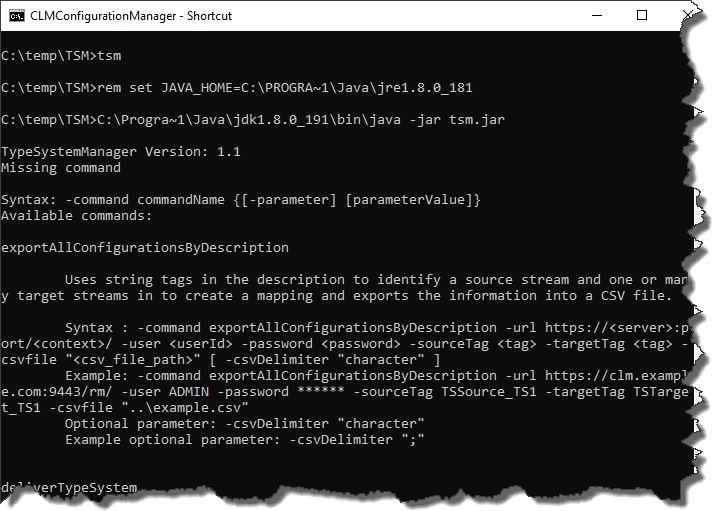We finally published Maintaining the Rational DOORS Next Generation type system in a configuration-management-enabled environment. Part 3: Automation tool deep dive on Jazz.net.This was a major effort and took a long time to do. This article provides a closer look at the source code, what it does and how it does it. It also provides some insight in how OSLC4J works and can be used. The information in the article, especially for setup and deployment of the automation prototype is very reusable for other scenarios and I hope to be able to reuse it in later articles and blog posts.
Type System Manager
When this effort was planned and performed last year, we had no idea what would come out of this effort. When we finished the first iterations and I started to write Maintaining the Rational DOORS Next Generation type system in a configuration-management-enabled environment. Part 3: Automation tool deep dive, we called what we where working on an automation prototype in the articles. I decided to keep it that way.
Since then, I started to call the prototype Type System Manager and I will continue to use that name.
The article Maintaining the Rational DOORS Next Generation type system in a configuration-management-enabled environment. Part 3: Automation tool deep dive, basically explains the details of the code that was created until end of January 2019. This is Release 1 of Type System Manager.
New versions?
While working on the article, I continued to refine the Type System Manager. See the releases tab for the latest release. The latest releases support more automation It integrates finding editable configurations based on sub-strings in the description, create a source to target mapping and import/deliver type system changes based on this mapping. The new commands avoid the creation of a CSV file.
The code is also slightly refactored. Most of the content from Maintaining the Rational DOORS Next Generation type system in a configuration-management-enabled environment. Part 3: Automation tool deep dive, still applies, but don’t be surprised if there are slight changes in names and locations. There basically where inconsistencies that I found along the way and decided to fix.
The latest versions also register Custom Resource Intensive Scenarios.

In addition to all this, the code on this branch already supports Registering Custom Resource Intensive Scenarios to CLM Applications. Each command uses its own scenario name composed from the command name plus the postfix “Scenario” to register the scenario execution.
Disclaimer and Download
Any code downloadable or accessible in this post is provided as is, without support, and used at your own risk.
The code was developed in Java using Eclipse and is based on the Eclipse Lyo Client.
Thanks to IBM approving, the code was published as open source, under
Eclipse Public License – v 1.0, in the incredible (mostly German speaking) Jazz Community and can be found here.
Related
- Type System Manager Part 1
- Type System Manager Part 2
- Maintaining the Rational DOORS Next Generation type system in a configuration-management-enabled environment. Part 1: Manual procedures
- Maintaining the Rational DOORS Next Generation type system in a configuration-management-enabled environment. Part 2: Automation
- Maintaining the Rational DOORS Next Generation type system in a configuration-management-enabled environment. Part 3: Automation tool deep dive
Feedback
If you have questions around the Type System Manager, ask them in the Jazz.net forum instead of commenting on the article or this blog post. Tag the question as a Rational DOORS Next Generation question and add the tag: dng-type-system-management to mark it for the reader.
Summary
As always I hope that the artifacts created for this blog and on Jazz.net will useful for the Jazz user community out there.

Reblogged this on Tim Feeney's Blog on Jazz and commented:
Ralph Schoon has done some very useful work providing some automation around our best practice guidance for DNG type system management. Check out his blog post to learn more.